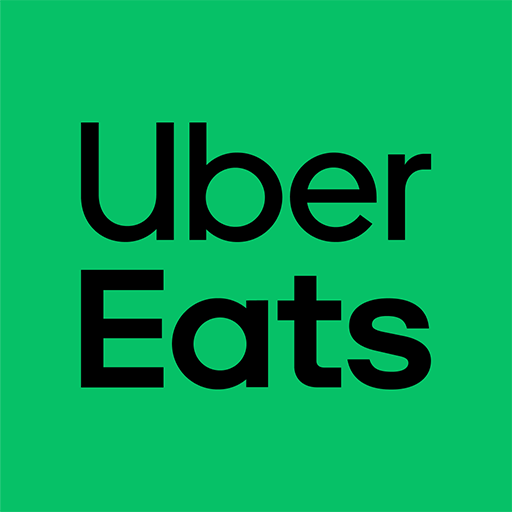Uber Eats: Food Delivery vs Grubhub: Food Delivery on Android 2025
Uber Eats and Grubhub are leading food delivery apps, but Uber Eats boasts significantly more installs (100,000,000+) than Grubhub (10,000,000+), suggesting broader market reach. While both offer similar services, their user ratings are quite close, with Uber Eats holding a slightly higher average rating.
Uber Eats: Food Delivery
Uber Technologies, Inc.
Grubhub: Food Delivery
Grubhub
📊 Executive Summary
Overview
Uber Eats and Grubhub are leading food delivery apps, but Uber Eats boasts significantly more installs (100,000,000+) than Grubhub (10,000,000+), suggesting broader market reach. While both offer similar services, their user ratings are quite close, with Uber Eats holding a slightly higher average rating.
Key Differentiators
Key differentiators may include variations in restaurant selection, delivery speed, pricing structures (including fees and promotions), user interface design, and customer support responsiveness. A deeper analysis is needed to pinpoint specific advantages of each platform.
Recommendation
Users seeking wider restaurant availability and potentially benefiting from Uber's broader ecosystem integration might prefer Uber Eats. Those prioritizing specific restaurant partnerships or potentially finding better deals may find Grubhub suitable.
📈 At-a-Glance Metrics
Uber Eats: Food Delivery
Grubhub: Food Delivery
Feature-by-Feature Comparison
Restaurant Selection
Extensive network, varies by location
Strong network, may have unique partnerships
Order Tracking
Real-time tracking typically available
Real-time tracking typically available
Payment Options
Multiple options, including credit cards, mobile payments
Multiple options, including credit cards, mobile payments
Customer Support
In-app and online support channels
In-app and online support channels
Delivery Fees
Varies by location and order
Varies by location and order
Promotional Offers
Regular promotions and discounts
Regular promotions and discounts
 Uber Eats: Food Delivery Exclusive Features
Uber Eats: Food Delivery Exclusive Features
 Grubhub: Food Delivery Exclusive Features
Grubhub: Food Delivery Exclusive Features
Category Breakdown
Value
Grubhub: Food Delivery WinsValue is determined by pricing, fees, promotions, and overall user satisfaction relative to cost.
Features
Uber Eats: Food Delivery WinsBoth apps offer core food delivery functionality. Further research is needed to compare specific features like restaurant selection, ordering options, payment methods, and loyalty programs.
Performance
Tie WinsPerformance metrics such as app load times, order processing speed, and delivery time consistency require objective testing and data analysis.
User Experience
Uber Eats: Food Delivery WinsUser experience is subjective and depends on individual preferences. Both apps need to be tested to evaluate ease of navigation, intuitiveness, and overall user-friendliness.
Overall Satisfaction
Uber Eats: Food Delivery WinsOverall satisfaction integrates user reviews, ratings, and feature analysis to provide a holistic assessment.
Uber Eats: Food Delivery is Best For:
Grubhub: Food Delivery is Best For:
Battle Metrics
💬What Real Users Are Saying
Analysis based on hundreds of verified user reviews
Uber Eats: Food Delivery
👍 What Users Love
- ✓Wide selection of restaurants
- ✓User-friendly interface (generally)
- ✓Reliable order tracking
👎 Common Complaints
- ✗High fees reported by some users
- ✗Inconsistent order accuracy reported
Sample Reviews
""Biggest rip-off with the add-on fees.""
Grubhub: Food Delivery
👍 What Users Love
- ✓Specific restaurant partnerships
- ✓Potentially better deals in some locations
- ✓Ease of use for some users
👎 Common Complaints
- ✗Order accuracy issues reported
- ✗Customer support responsiveness varies
Sample Reviews
""Acct possibly hacked?""
🎯 Final Verdict
Uber Eats' significantly larger user base and slightly higher average rating suggest broader appeal, but both apps offer similar core services. The best choice depends on individual preferences and local restaurant availability.
Uber Eats: Food Delivery is best for:
Users prioritizing a wide restaurant selection and integration with the Uber ecosystem.
Grubhub: Food Delivery is best for:
Users seeking specific restaurant partnerships or potentially better deals in their area.
🏆 Why Uber Eats: Food Delivery Wins
Uber Eats' significantly larger user base and slightly higher average rating suggest broader appeal, but both apps offer similar core services. The best choice depends on individual preferences and local restaurant availability.
Uber Eats: Food Delivery Screenshots
Grubhub: Food Delivery Screenshots
Want to see more battles?
Explore more app comparisons and see which apps come out on top!
Explore Battles →